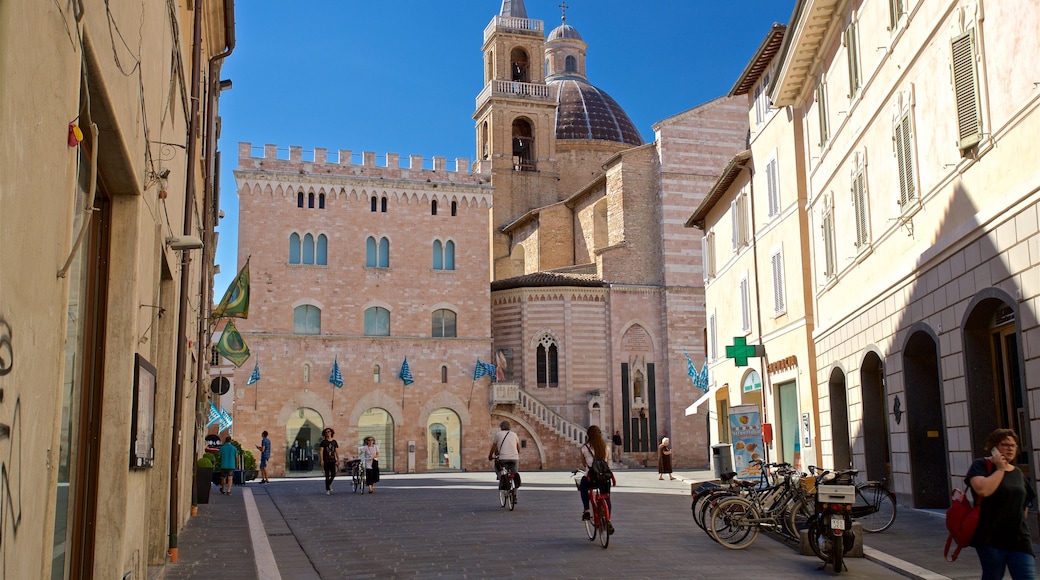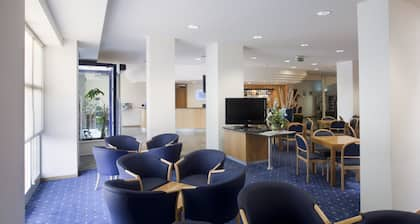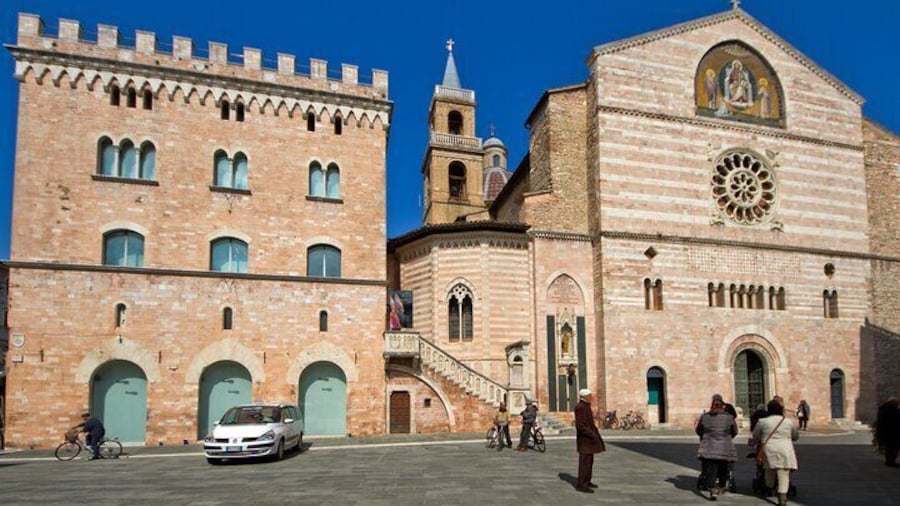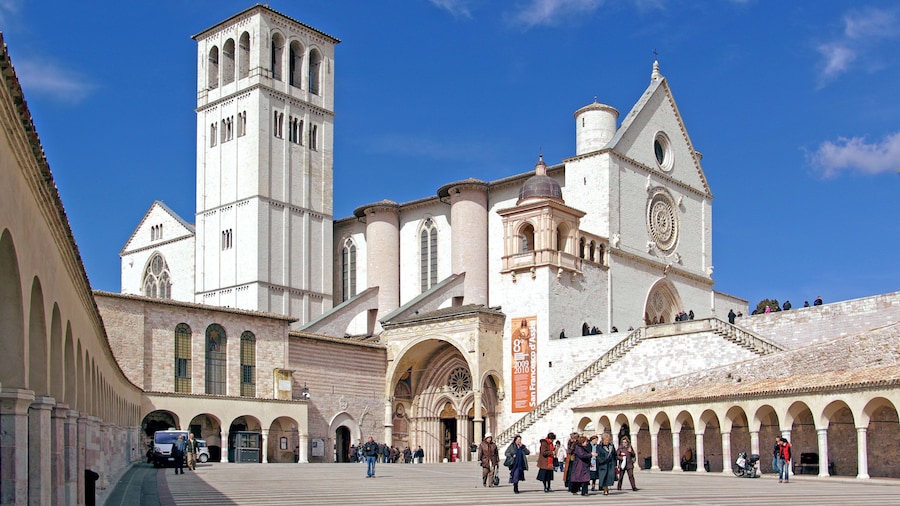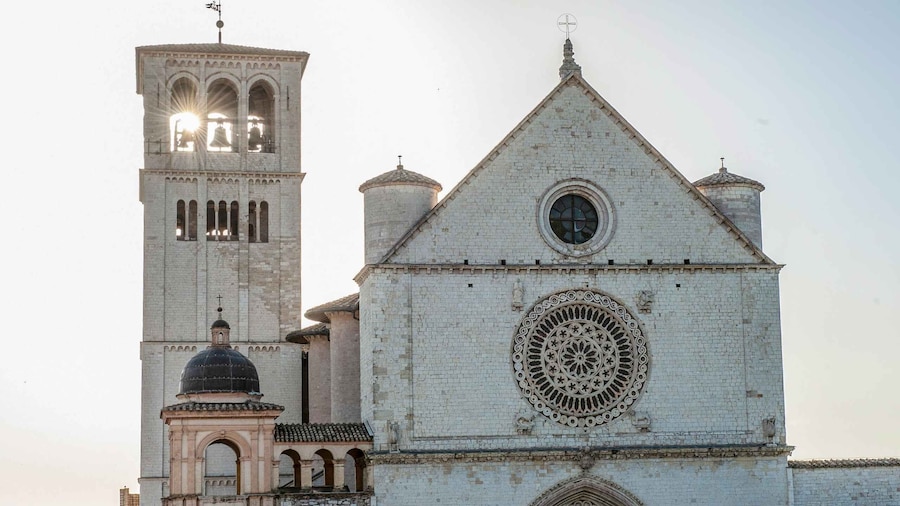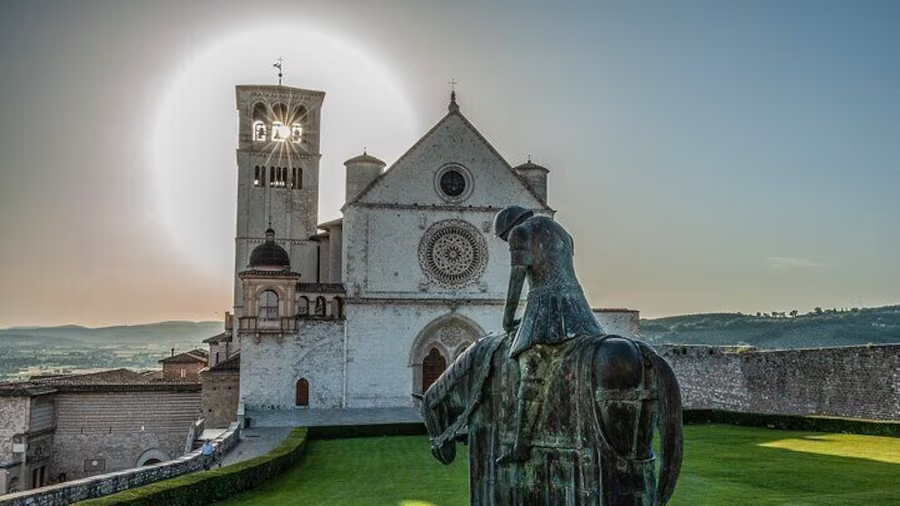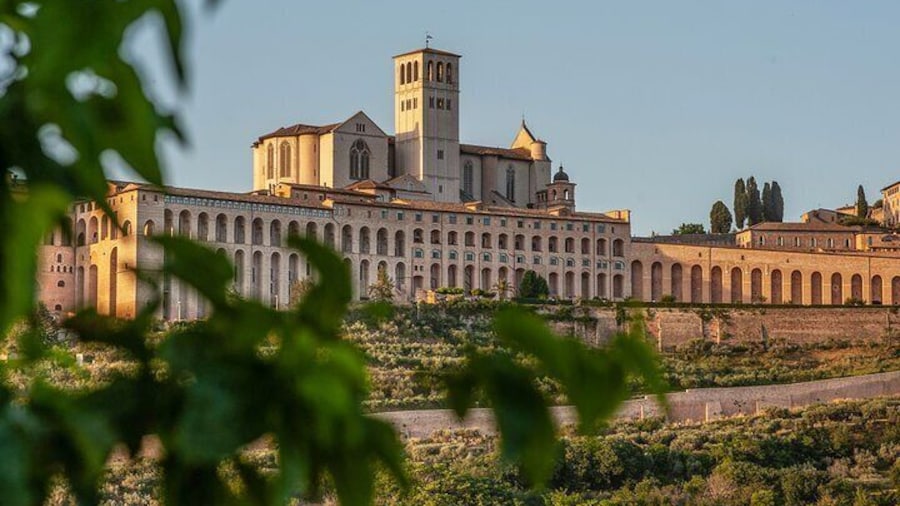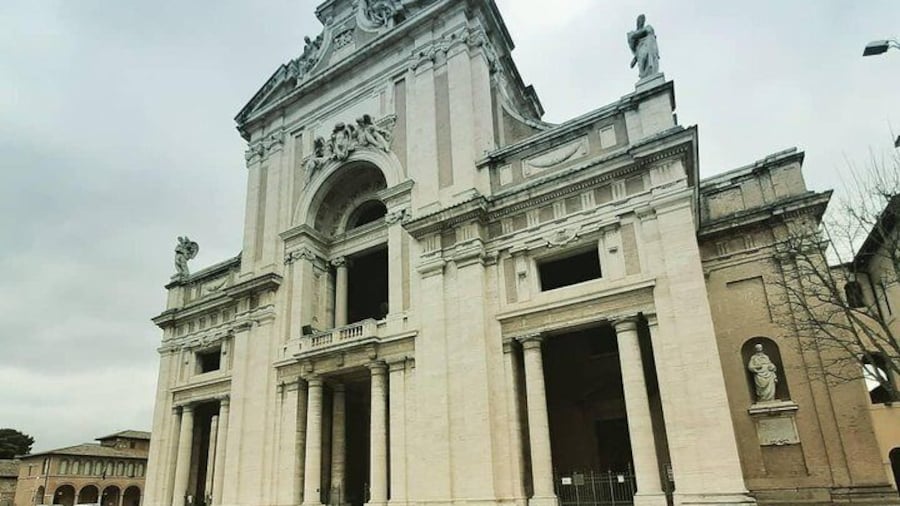Foligno is set on the banks of the Topino River where it leaves the Apennine Mountains and flows out to join the Clitunno River system. This surprisingly advanced Umbrian town has a history that possibly dates back as far as the 8th century B.C.
Begin your discovery of Foligno in the central Piazza della Repubblica. This elongated town square sports the popular Umbrian designs of the 12th and 13th centuries. You can’t miss the Palazzo Comunale (Town Hall) and the adjoining Palazzo Orfini. Emiliano Orfini is said to have opened one of Italy’s first printing shops here and in 1472 it produced Dante's Divine Comedy, the first book to be printed in the Italian language.
While still in the main square, admire the impressive pink-and-white stone Cathedral of San Feliciano. This cathedral has not one, but two, façades, one facing the Piazza della Repubblica and one facing the adjoining Piazza Duomo. Inside, admire the ornate baldachin (canopy over the altar), which is a 17th-century copy of the one in St Peter’s in Rome.
Learn more about the history of Foligno in the Museo Archeologico at the Palazzo Trinci. The palace is home to intricate frescoes from the early 15th century. As well as the museum, it also houses the Pinacoteca Comunale, the public art gallery, and has a fascinating display about jousting, whereby knights fight on horseback with lances.
Foligno lies on the main train line from Rome to Ancona and has many bus connections, although it’s easier to get here by car. Take a short ride out to the Abbey of Sassovivo on a hill. The abbey is best known for its 13th-century cloister. Its 128 columns around a central well support small, ornate marble arches.
Back in the center of Foligno, go shopping, visit a market and sample some of the region’s fresh produce in a fine Italian restaurant.
While Foligno has grown to become a bustling regional center with its own industries, there is still enough history in its ancient streets to find a happy balance between ancient culture and 21st-century comforts during your stay in this Umbrian town.




